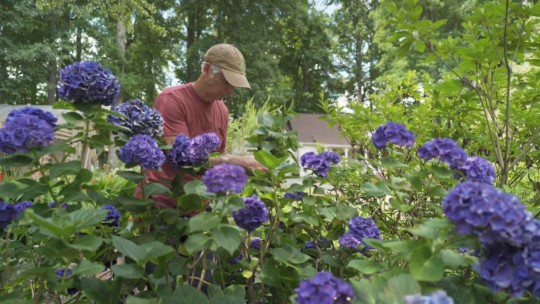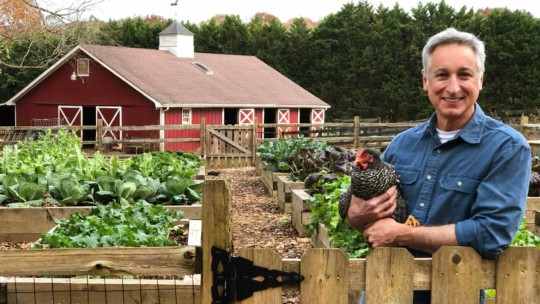Want to enjoy your favorite fruit at its peak freshness and flavor—and create a more beautiful backyard in the process? Well, gardening expert Joe Lamp’l has two sweet solutions: potted and bare root fruit trees! In this Backyard Life video, Joe discusses the pros and cons of both, as well as tips on how to plant fruit trees correctly.
Potted Fruit Trees
If you’re looking for an easy-to-plant option that could bear fruit in its first year, Joe says potted fruit trees are the way to go. Once you’ve chosen the variety best suited to your growing conditions (and taste buds!), visually inspect it before leaving the nursery. Doing so will help ensure it’s healthy and disease-free, he adds.
Before putting it in the ground, Joe says you’ll need to first select an appropriate planting location. An area that receives full sun, drains well, and doesn’t encroach on existing tree canopies is perfect.
To plant your fruit tree right, Joe suggests digging a hole that’s two- to three-times wider—and no deeper—than the pot it was grown in. Additionally, make sure your tree’s roots aren’t wrapped around the rootball horizontally (can occur if it’s been in a container too long).
Once placed in your hole, use a shovel to double-check the planting level. Then, simply backfill and apply water and mulch. (Joe says you’ll need to continue watering for several months until the tree’s become established.)
Bare Root Fruit Trees
A popular alternative to potted fruit trees is planting bare root fruit trees. Although they’ll take up to a year to produce, Joe notes they’re a perfect choice for those seeking more fruit varieties and tree sizes. And, they’re a far cheaper option if you want to plant more than a single tree.
Typically purchased online, bare root trees arrive pre-packaged with wet, shredded newspaper around the roots to keep them adequately hydrated.
Unlike potted trees that can be planted whenever you’d like, bare root trees need to be planted as soon as possible to help bring them out of the dormant state they’re delivered in. Before doing so, however, Joe says you’ll want to first soak the roots in a bucket of water for four to six hours.
Joe recommends planting bare root fruit trees in much the same way you would their potted counterparts. But he does point out they’ll grow more quickly if backfilled with native soil.
Fruit Tree Buying Tips
Finally, Joe says you’ll want to determine if your tree is self-pollinating before buying it. If it isn’t, he suggests planting a second tree—of a different variety—nearby, so the two can share pollen.
By following Joe’s planting tips, you’ll be enjoying the fruits of your planting labor in no time at all!



